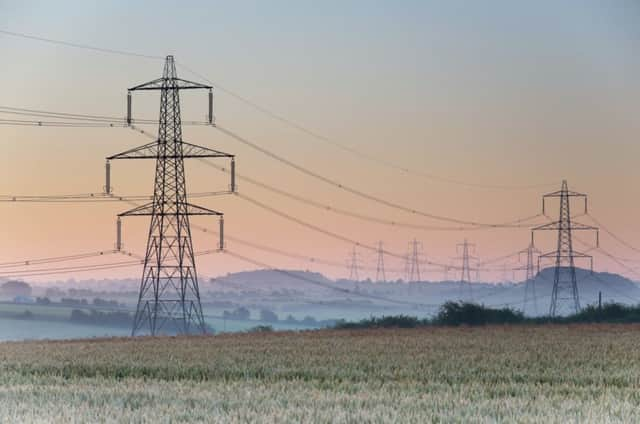Put our energy into a changing land


For four years, largely out of sight of the power-consuming public, Britain’s energy system has been changing.
The Electricity Market Reform (EMR) process has been a seismic shift for those who generate our electricity – a shift designed to drive investment into the energy markets of the future, as well as to protect consumer bills.
Advertisement
Hide AdAdvertisement
Hide AdFew in the industry would argue with those objectives, and last month saw EMR finally come into being.
The UK Government’s first blind green power auction through the Contracts for Difference scheme, which concluded at 7am on 26 February for technologies such as onshore wind, offshore wind and solar, reinforced how far costs are already being driven down by the industry.
Under the new Contracts for Difference funding regime, each contracted unit of power from onshore wind and solar will be around 10 per cent cheaper than the agreed cost of electricity from the proposed new nuclear plant at Hinkley Point. Notably, renewables projects are now forced to compete in an annual blind auction for contracts to support their investment, with future nuclear and carbon capture and storage projects still negotiating with government a suitable “strike price” – the amount paid for each unit of power generated.
Offshore, Scotland’s renewables industry also received a welcome boost from the auction process when the Neart na Gaoithe wind farm in the Firth of Forth was awarded a contract to sell the power it will generate for the next 15 years. The project is expected to create hundreds of direct and indirect jobs during its construction, as well as throughout its operational life.
Cost reduction was key on the Neart na Gaoithe project, too: this one auction has seen the price of offshore wind fall by just under a fifth, with the industry on the way to its target of a 30 per cent reduction in cost by 2020.
This means we now have two offshore projects with a “route to market” and moving towards a final investment decision, with the Beatrice offshore wind farm in the Moray Firth securing a contract offer last year.
While many challenges lie ahead for offshore wind, these two schemes form the beginnings of an offshore renewable energy industry here in Scotland.
There remain, however, almost 3GW of projects with planning permission which are still looking to secure contracts in the future, and which must look to next year’s auction.
Advertisement
Hide AdAdvertisement
Hide AdTogether, they could create more than 10,000 jobs during construction, and more than £2 billion in gross value added. What they lack is any certainty, not only over when that process might start – October is a best guess – but on how much is in the pot, and how long the pot will exist.
It is crucial that the Department of Energy and Climate Change gives some clarity on the size of the budget that will be available in these next allocation rounds. Only that can inject the certainty which developers need to secure the billions of pounds of private finance which will ultimately allow these projects to be built.
Onshore, wind power has driven the growth of Scotland’s renewable energy sector over recent years, and is responsible for the lion’s share of the 12 million tonnes of CO2 displaced by the sector in 2013. The technology remains at the centre of a heated debate, but there can be no argument over the fact that costs are coming down, and the industry is focused on being cost-competitive with newbuild gas-fired power by the end of this decade.
The main challenge for all of us is the lack of a clear ambition beyond 2020, and the absence of even an indicative budget for the next auction of contracts. Nobody can expect the supply chain to come and set up business here in the UK for a limited five-year window of opportunity.
Likewise, the unsuccessful projects in this round need to know they have a chance next year if they are to keep investing, and the industry needs a clear long-term goal if it is to contribute further to government’s ambitions of driving down costs, reducing carbon emissions and increasing the UK’s future energy security.
The renewable energy sector is maturing: costs are coming down and the industry is growing, which is ultimately good news for us all.
• Niall Stuart is chief executive at Scottish Renewables, www.scottishrenewables.com